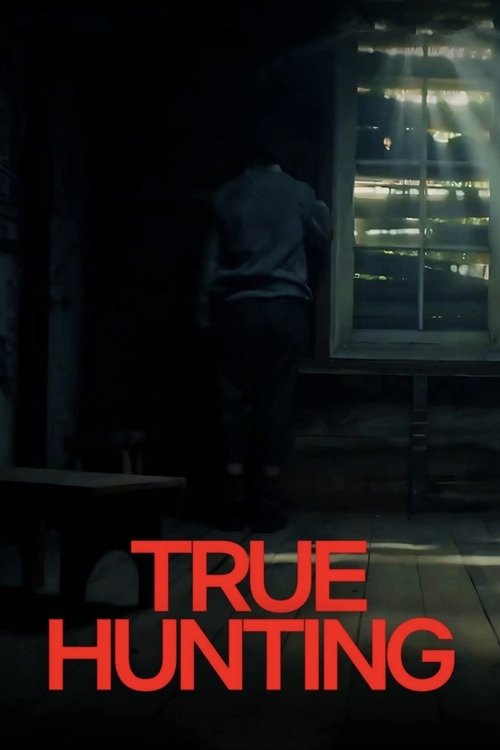
Ask Your Own Question
What is the plot?
The episode begins with the U.S. intelligence community confirming the location of Osama bin Laden in a heavily fortified compound in Abbottabad, Pakistan. After years of tracking a trusted courier, analysts pinpoint the compound as the likely hideout. The President of the United States authorizes a highly classified and risky Navy SEAL raid, codenamed Operation Neptune Spear, to capture or kill bin Laden.
The SEAL Team Six prepares meticulously for the mission, reviewing intelligence, rehearsing the layout of the compound, and planning the insertion and extraction routes. The team boards helicopters at a secret airbase, flying low to avoid radar detection as they approach the target compound under cover of darkness.
Upon arrival, the helicopters face unexpected challenges. One of the helicopters experiences a hard landing inside the compound due to higher-than-expected air density and the compound's walls, causing damage that renders it inoperable. The SEALs quickly secure the crash site and prepare to destroy the helicopter to prevent classified technology from falling into enemy hands.
The assault team breaches the compound's outer walls silently and moves carefully through the complex. They clear each room methodically, encountering resistance from bin Laden's defenders. The SEALs engage in close-quarters combat, killing the armed men who attempt to defend the compound. The fighting is intense but brief, lasting about 15 minutes.
Inside the compound, the SEALs locate bin Laden on the third floor. According to the dramatization, two SEALs enter a room through a curtain and shoot bin Laden frontally. However, official accounts and memoirs such as Mark Bissonnette's No Easy Day describe bin Laden leaning out from his bedroom doorway and being immediately engaged by suppressed rifle fire from about 10 feet away, taking two shots to the side of the head before collapsing.
After confirming bin Laden's death, the SEALs secure the women and children found in the compound, ensuring their safety. They conduct a thorough search of the premises, uncovering weapons caches including Kalashnikov rifles and pistols, as well as a large quantity of opium. They also seize a trove of intelligence materials: computer hard drives, documents, DVDs, thumb drives, cell phones, and other electronic equipment for later analysis.
With the damaged helicopter beyond repair, the SEALs destroy it using explosives after the pilot smashes the instrument panel and classified components to safeguard sensitive technology, including stealth features. The remaining operational helicopter and a reserve Chinook helicopter are used to evacuate the team and bin Laden's body from the compound.
As the SEALs exit, a crowd of local residents gathers outside, drawn by the noise and commotion. An American officer fluent in Urdu uses a megaphone to inform the crowd that the operation is a Pakistani military action and instructs them to stay back.
The helicopters fly bin Laden's body to Bagram Airfield in Afghanistan. From there, the body is transported aboard a V-22 Osprey tiltrotor aircraft, escorted by two U.S. Navy F/A-18 fighter jets, to the aircraft carrier USS Carl Vinson. The entire raid, from entry to exit, lasts approximately 38 minutes, with the assault phase completed in the first 15 minutes.
The episode concludes with the aftermath of the operation, highlighting the intelligence gathered and the impact of bin Laden's death on the global fight against terrorism.
Related Titles
Browse All Titles →What is the ending?
The ending of American Manhunt: Osama bin Laden, Season 1, Episode 3 "Operation Neptune Spear," depicts the successful SEAL Team Six raid on Osama bin Laden's compound in Abbottabad, Pakistan, culminating in bin Laden's death and the extraction of his body by U.S. forces.
Expanded narrative of the ending scene by scene:
The episode's climax begins with the SEAL Team Six helicopters approaching the compound under cover of darkness. The team prepares mentally and physically for the high-risk mission, aware that this is the culmination of a decade-long hunt.
Upon landing, the SEALs move swiftly and methodically through the compound. They first encounter resistance at the guesthouse where bin Laden's primary courier, Abu Ahmad al-Kuwaiti, is located. The door is locked, and as the SEALs prepare to breach, they are fired upon. Returning fire, they kill the courier and his wife, who emerges carrying a child. Bullet shrapnel lodges in equipment, underscoring the intensity of the firefight.
Inside the main building, the SEALs clear each floor carefully. On the first floor, they kill the second courier and his wife. On the second-floor landing, they encounter and kill bin Laden's armed son, Khalid. The tension is palpable as the team moves upward, knowing the target is near.
Reaching the third-floor bedroom, the SEALs find Osama bin Laden. According to dramatization and corroborated accounts, bin Laden leans out from his bedroom doorway and is immediately engaged by suppressed rifle fire from about 10 feet away. He is shot twice in the head and collapses, dead.
Following the kill, the SEALs spend time securing the compound, clearing rooms, and gathering intelligence materials including weapons, hard drives, documents, and electronic devices. They also secure women and children found inside, ensuring no further threats remain.
Meanwhile, one of the helicopters suffers a hard landing and is damaged beyond flight. To protect classified technology, the pilot destroys the helicopter's sensitive equipment and the SEALs demolish the aircraft with explosives. The team then consolidates onto the remaining operational helicopter and a reserve Chinook, which evacuates the team and bin Laden's body from the compound.
As the team departs, a crowd of local residents gathers outside, curious about the commotion. An American officer, speaking Urdu through a megaphone, tells the crowd it is a Pakistani military operation and instructs them to stay back.
The body of Osama bin Laden is flown first to Bagram Airfield and then to the aircraft carrier USS Carl Vinson aboard a V-22 Osprey, escorted by fighter jets, marking the final phase of the operation.
Fate of main characters at the end:
- Osama bin Laden: Killed in his third-floor bedroom by SEAL Team Six.
- SEAL Team Six members: Successfully complete the mission; no casualties reported during the raid itself. They destroy the damaged helicopter and evacuate safely.
- Abu Ahmad al-Kuwaiti (bin Laden's primary courier): Killed during the initial breach of the guesthouse.
- Bin Laden's son Khalid: Killed on the second-floor landing armed and resisting.
This detailed sequence highlights the precision, risks, and complexity of the operation, focusing on the tactical execution and the final resolution of the decade-long manhunt.
Is there a post-credit scene?
The TV show American Manhunt: Osama bin Laden, season 1 episode 3 titled "Operation Neptune Spear" (2025), does not have a post-credit scene.
What specific intelligence led the SEAL Team Six to locate Osama bin Laden's compound in Pakistan?
A pivotal clue emerged in Pakistan ten years after 9/11, which triggered the highly classified SEAL raid. This intelligence was critical in pinpointing bin Laden's location in Abbottabad, Pakistan, leading to the operation known as Neptune Spear.
How is the role of the pilot depicted during the SEAL Team's raid on bin Laden's compound?
The pilot is shown executing a controlled crash landing inside the compound, which was a crucial maneuver allowing the SEALs to deploy quickly and safely. This act demonstrated exceptional skill and control under pressure during the operation.
Which key figures from the CIA and military are portrayed in the episode, and what roles do they play?
The episode features portrayals of several key figures including Gina Bennett (CIA Counterterrorism Analyst), J. Cofer Black (CIA Counterterrorism Director), John O. Brennan (Deputy National Security Advisor), William McRaven (SEAL Team 6), Leon Panetta (CIA Director), and others. These individuals are shown coordinating intelligence, planning, and executing the operation.
How does the episode depict the decision-making process of the President regarding the raid?
The President is shown ordering the highly classified and risky SEAL raid after the emergence of the pivotal clue. The episode highlights the gravity and secrecy of the decision, emphasizing the high stakes involved in authorizing the operation.
What challenges or threats do the SEAL Team face while infiltrating and securing the compound?
The SEAL Team navigates the compound with precision, neutralizing any threats encountered. The operation is portrayed as a masterclass in teamwork and execution, with the team overcoming physical and tactical challenges to successfully complete their mission.
Is this family friendly?
The TV miniseries "American Manhunt: Osama bin Laden," season 1 episode 3 titled "Operation Neptune Spear," is rated TV-MA in the United States, indicating it is intended for mature audiences and is not family-friendly for children.
Potentially objectionable or upsetting aspects include:
- Moderate violence and gore, as the episode depicts military operations involving U.S. Navy SEALs targeting a high-profile terrorist.
- Moderate frightening and intense scenes, reflecting the tension and danger of the mission and its context.
- Mild profanity is present but no sex, nudity, alcohol, drugs, or smoking.
Given the serious subject matter involving terrorism, military action, and real-world violence, the content is likely too intense and potentially disturbing for children or sensitive viewers. The series is best suited for adults interested in historical and military documentary storytelling.




















